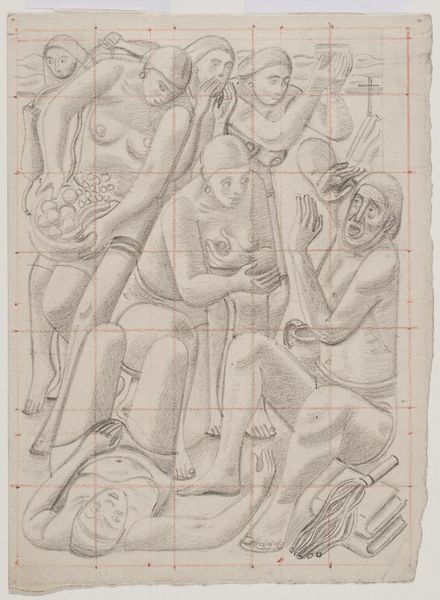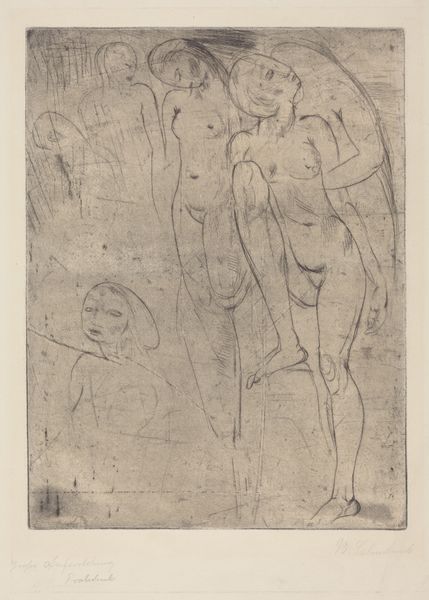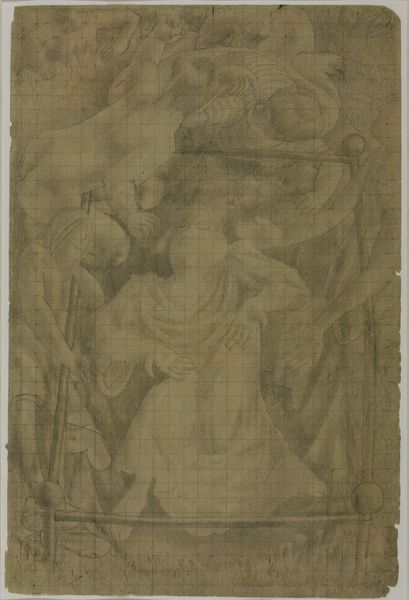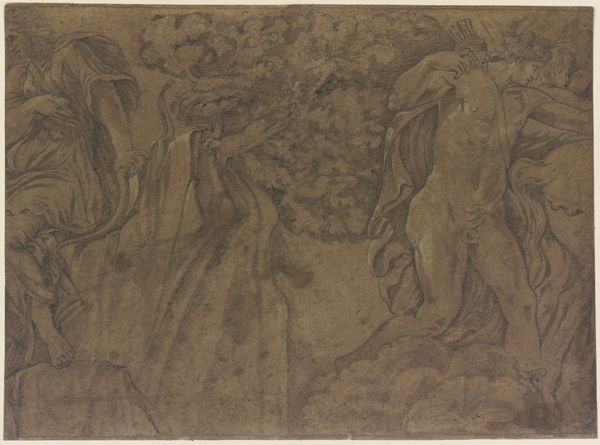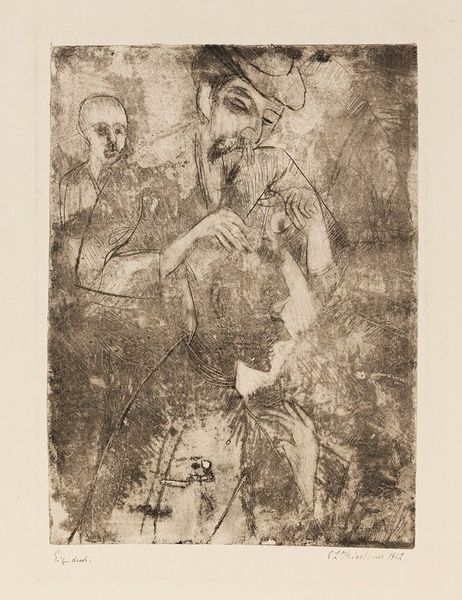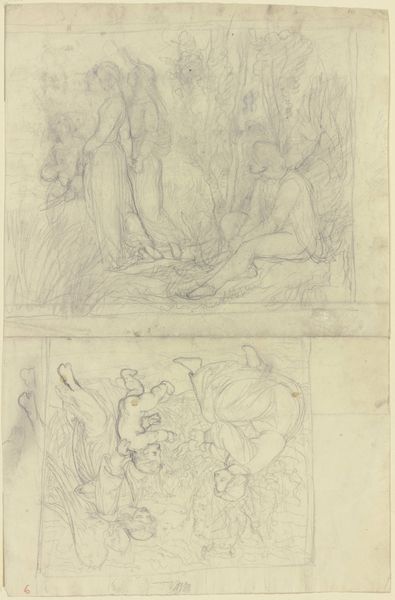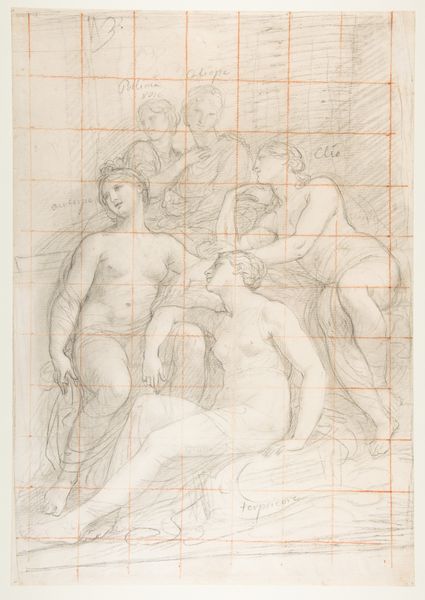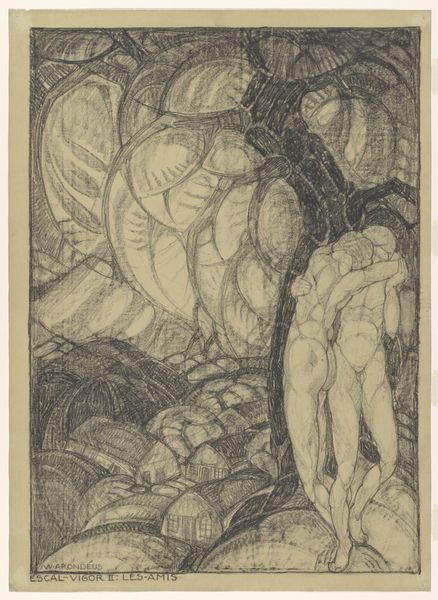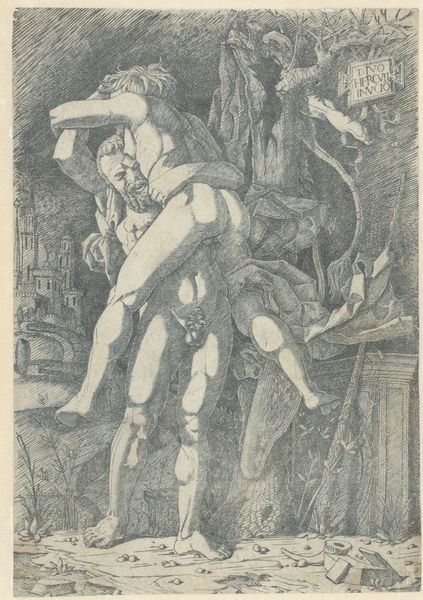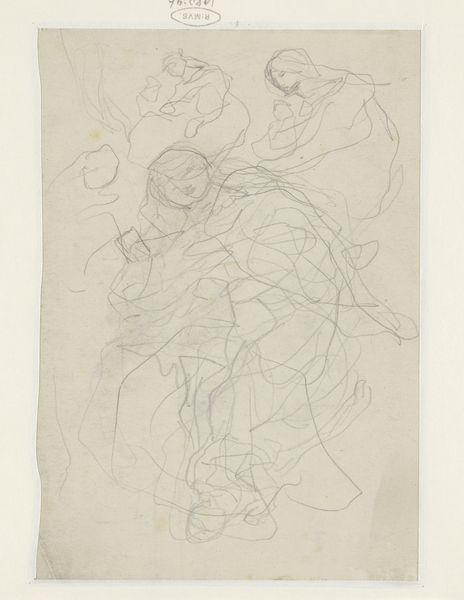
Dimensions: support: 403 x 267 mm
Copyright: © Estate of Stanley Spencer | CC-BY-NC-ND 4.0 DEED, Photo: Tate
Curator: Here we have Sir Stanley Spencer's preparatory pencil sketch, "Drawing for the Left Panel of ‘Resurrection: Rejoicing’." It's part of the Tate collection. Editor: It looks like a jumble, almost frantic. A mass of bodies emerging, rendered in subdued pencil strokes. I'm immediately drawn to the material process behind this. Curator: Indeed. Spencer's commission for the Sandham Memorial Chapel during and after World War I shaped his artistic trajectory significantly. Note how the grid implies a process of scaling up the figures for a larger painting. Editor: Yes, but how do the materials he uses – the paper, the graphite – reflect the post-war austerity and the labour-intensive nature of creating such a grand work? Curator: The drawing offers a glimpse into the cultural context; it's a study of collective grief and hope following the immense losses of the war. Spencer's vision of resurrection departs from traditional religious iconography. Editor: The grid suggests a repetitive, almost industrial process. This wasn't just divine inspiration; it was labour, a material transformation mirroring the physical realities of the war. Curator: I see the social impact, the way Spencer transforms the chapel into a communal space for mourning and remembrance. Editor: And I see the layers of planning, the material choices that inform the final, monumental work. It changes the whole experience.
Comments
tate 7 months ago
⋮
http://www.tate.org.uk/art/artworks/spencer-drawing-for-the-left-panel-of-resurrection-rejoicing-t03036
Join the conversation
Join millions of artists and users on Artera today and experience the ultimate creative platform.
tate 7 months ago
⋮
These drawings are studies for a series of paintings of The Resurrection. Spencer had originally planned one huge canvas, but in the end, settled for a number of smaller, interrelated paintings. The Resurrection: Port Glasgow, the painting shown here, was to be the centrepiece of the group. Rather than using models, Spencer worked from his imagination, often making his first sketches on strips of toilet paper, which he found useful for its length and low cost. He then copied the sketches he liked onto large sheets in a sketchbook, some of which are displayed here. He next squared up the drawings and transferred them on to canvas to be painted. In Spencer''s homely vision of this Christian day of reckoning, rising from the grave seems to be rather like waking up in bed. He presents an idealised version of family life in which the whole community relaxes together, yawning, stretching, brushing their hair, embracing. Most of the figures wear loose pyjama-like clothing, some dance, some garden. It is a solid, earthly heaven, in which memories of childhood comfort and domesticity are mingled with adult dreams of erotic love. Gallery label, August 2004
